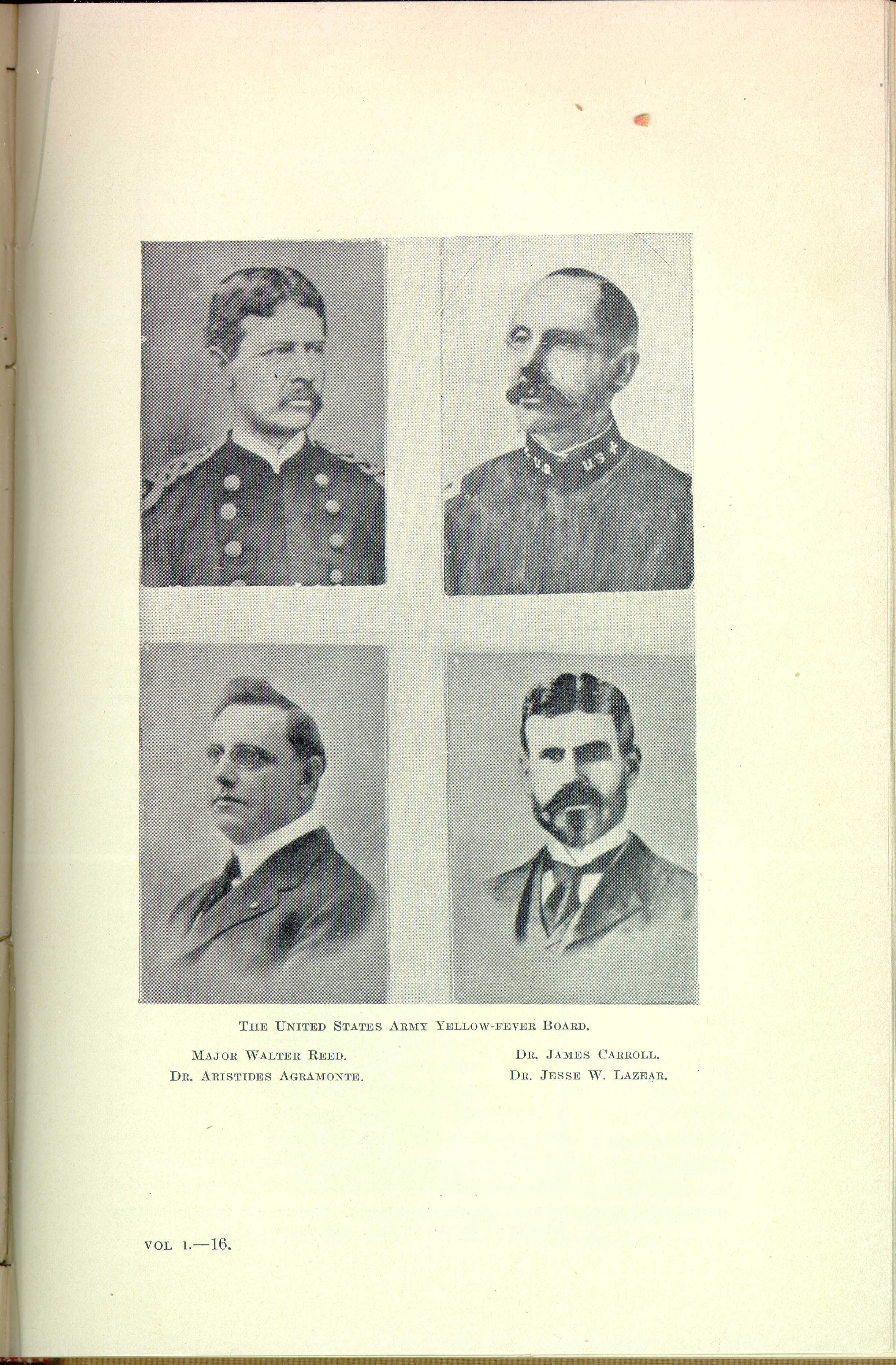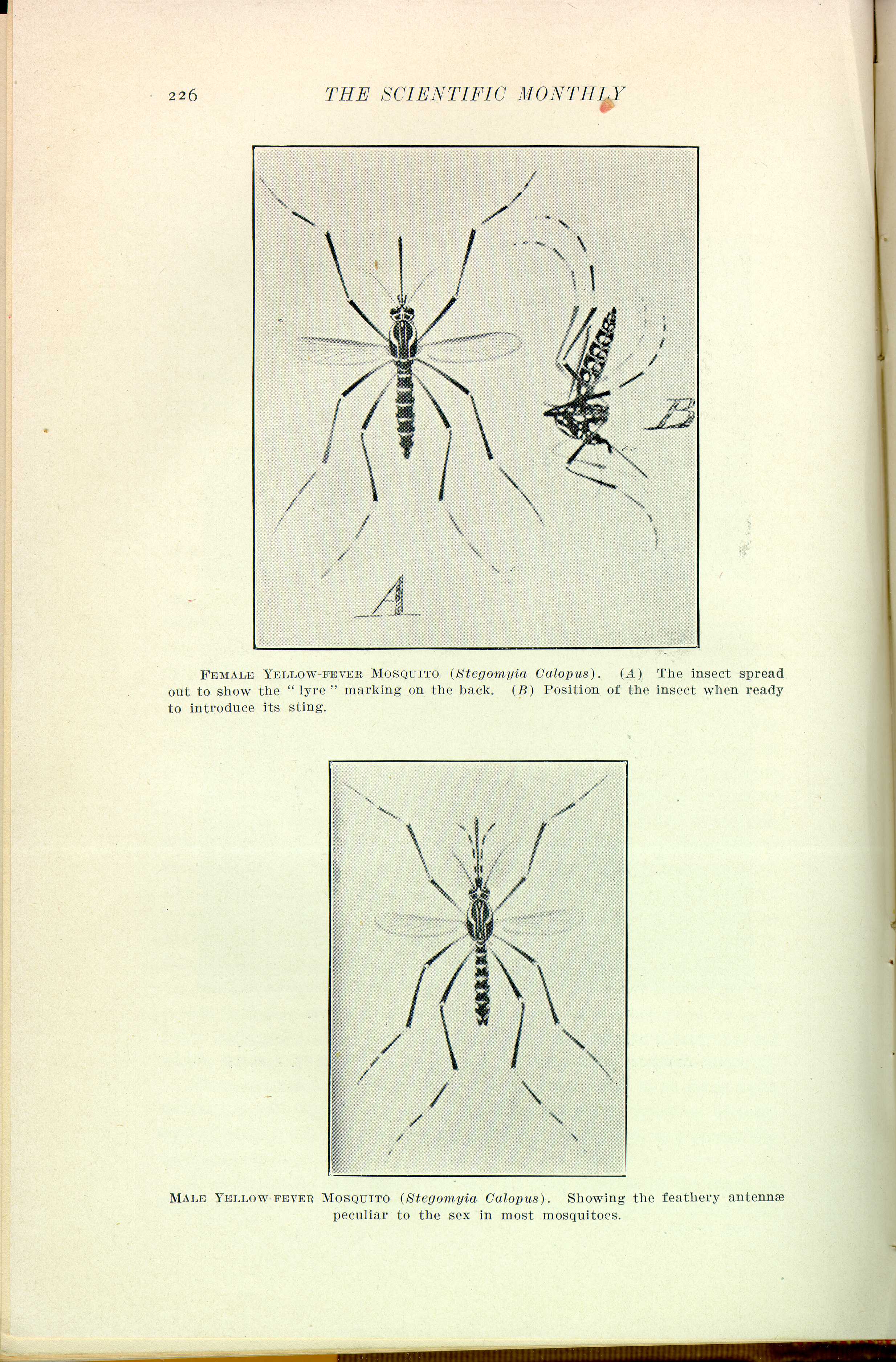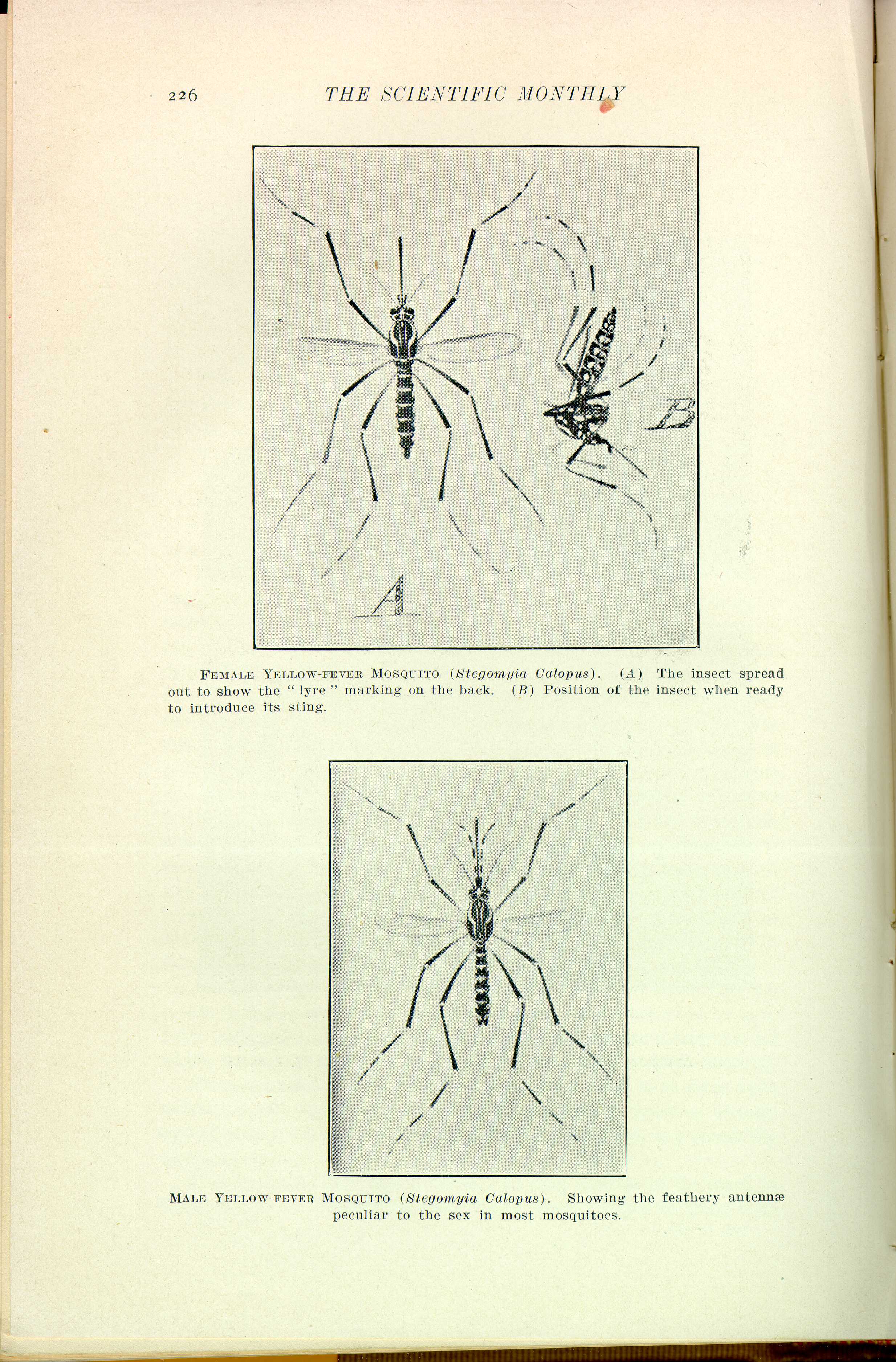| The Scientific Monthly | ||
TERMINATION OF THE FIRST SERIES OF MOSQUITO EXPERIMENTS.
DEATH OF LAZEAR.
The month of September, 1900, was fraught with worry and anxiety: what with Carroll's and Private Dean's attacks of yellow fever
Fortunately both he and Dean made an uninterrupted recovery, but we were still to undergo the severest trial, a sorrow compared to which the fearful days of Carroll's sickness lose all importance and dwindle almost into insignificance.
On the morning of the eighteenth my friend and classmate Lazear, whom in spite of our short intercourse I had learned to respect and in every way appreciate most highly, complained that he was feeling "out of sorts.'' He remained all day about the officers' quarters and that night suffered a moderate chill. I saw him the next day with all the signs of a severe attack of yellow fever.
Carroll was already walking about, though enfeebled by his late sickness, and we both plied Lazear with questions as to the origin of his trouble; I believe we affectionately chided him for not having taken better care of himself. Lazear assured us that he had not experimented upon himself, that is, that he had not been bitten by any of the purposely infected mosquitoes.
After the case of Dean so plainly demonstrated the certainty of mosquito infection, we had agreed not to tempt fate by trying any more upon ourselves, and even I determined that no mosquito should bite me if I could prevent it, since the subject of my immunity was one that could not be sustained on scientific grounds; at the same time, we felt that we had been called upon to accomplish such work as did not justify our taking risks which then seemed really unnecessary. This we impressed upon Major Reed when he joined us in October and for this reason he was never bitten by infected mosquitoes.
Lazear told us, however, that while at "Las Animas'' Hospital the previous Thursday (five days before), as he was holding a test-tube with a mosquito upon a man's abdomen, some other insect which was flying about the room rested upon his hand; at first, he said, he was tempted to frighten it away, but, as it had settled before he had time to notice it, he decided to let it fill and then capture it; besides, he did not want to move in fear of disturbing the insect contained in his tube, which was feeding voraciously. Before Lazear could prevent it, the mosquito that bit him on the hand had flown away. He told us in his lucid moments, that, although Carroll's and Dean's cases had convinced him of the mosquito's rôle in transmitting yellow fever, the fact that no infection
How can I describe the agony of suspense which racked our souls during those six days? It seemed to us as though a life was being offered in sacrifice for the thousands which it was to contribute in saving. Across the span of thirteen years the memory of the last moments comes to me most vividly and thrilling, when the light of reason left his brain and shut out of his mind the torturing thought of the loving wife and daughter far away, and of the unborn child who was to find itself fatherless on coming to the world.
Tuesday, the twenty-fifth of September saw the end of a life full of promise; one more name, that of Jesse W. Lazear, was graven upon the portals of immortality. And we may feel justly proud for having had it, in any way, associated with our own.
The state of mind in which this calamity left us may better be imagined than described. The arrival of Major Reed several days after in a great measure came to relieve the tensity of our nerves and render us a degree of moral support of which we were sorely in need.
Lazear's death naturally served to dampen our fruition at the success of the mosquito experiments, but, this notwithstanding, when the facts were known we were the subjects of much congratulation and the question whether the theory had been definitely demonstrated or not was the theme of conversation everywhere, about Havana and Camp Columbia particularly. We fully realized that three cases, two experimental and one accidental, were not sufficient proof, and that the medical world was sure to look with doubt upon any opinion based on such meager evidence; besides, in the case of Carroll, we had been unable to exclude the possibility of other means of infection, so that we really had but one case, Dean's, that we could present as clearly demonstrative and beyond question. In spite of this, we thought that the results warranted their presentation in the shape of a "Preliminary Note,'' and after all the data were carefully collected from Lazear's records and those at the Military Hospital, a short paper was prepared which the Major had the privilege to read at the meeting of the American Public Health Association, held on October 24, in the city of Indianapolis.
For this purpose Major Reed went to the States two weeks after his return to Cuba, and Carroll also took a short leave of absence so as to fully recuperate, in preparation for the second series of inoculations which we had arranged to undertake, after the Indianapolis meeting.
These inoculations, according to our program, were to be made upon volunteers who should consent to suffer a period of previous quarantine at some place to be selected in due time, away from any possibility of yellow fever.
It so happened then that I was left the only member of the board in Cuba and, under instructions from Major Reed, I began to breed mosquitoes

THE UNITED STATES ARMY YELLOW-FEVER BOARD.
MAJOR WALTER REED. DR. JAMES CARROLL
DR. ARISTIDES AGRAMONTE. DR. JESSE W. LAZEAR.
[Description: A composite of four portraits, the left two of which are
photographs. The right two might be paintings.]

FEMALE YELLOW-FEVER MOSQUITO (Stegomyia Calopus). (A) The insect spread out to show the "lyre'' marking on the back. (B) Position of the insect when ready to introduce its sting.
[Description: Close-up photograph of two views of a female yellow-fever mosquito: one is spread out and the other is in stinging position.]
MALE YELLOW-FEVER MOSQUITO (Stegomyia Calopus). Showing the feathery antennæ peculiar to the sex in most mosquitoes.
[Description: Close-up photograph of a male yello-fever mosquito. Depicts the feathery antennæ peculiar to the male.]| The Scientific Monthly | ||